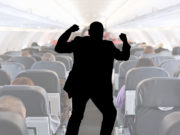Forty-four airline passengers and crewmembers suffered serious injuries during episodes of in-flight turbulence in 2016 — more than double the number injured the previous year, according to figures released by the U.S. Federal Aviation Administration (FAA) in a new turbulence fact sheet on its website Wednesday.
Of the 44 people injured last year, 33 were passengers and 11 were crewmembers. In 2015, seven passengers and 14 crewmembers were injured. The worst year in the past 15 years was 2009, when 80 passengers and 26 crewmembers were injured. In 2006, only four passengers and eight crewmembers were injured.
FAA did not provide details on the injuries suffered, but the U.S. National Transportation Safety Board requires airlines to report serious injuries and fatalities. A serious injury is defined as “any injury that (1) requires the individual to be hospitalized for more than 48 hours, commencing within seven days from the date the injury was received; (2) results in a fracture of any bone (except simple fractures of fingers, toes, or nose); (3) causes severe hemorrhages, nerve, muscle or tendon damage; (4) involves any internal organ; or (5) involves second-or third-degree burns, or any burns affecting more than five percent of the body surface.” FAA said it tracks these reports, but not general incidents of turbulence.
In the fact sheet, FAA said passengers can prevent injuries from unexpected turbulence by keeping their seat belts buckled at all times. FAA said it has worked with the U.S. Commercial Aviation Safety Team to develop guidance materials to help carriers and other operators prevent turbulence injuries.
FAA said it recommends that air carriers improve dispatch procedures by keeping communications channels open full time; include turbulence reports in weather briefings; promote real-time information sharing between pilot and dispatcher; and reinforce the carrier’s turbulence-avoidance policy through dispatcher training.


